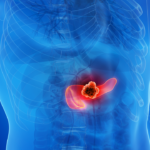Ken Herrmann, MD is the lead author of the phase III VISION trial conducted at Essen Germany’s Nuclear Medicine Department. The USFDA recently approved a drug that had been developed to treat patients with prostate-specific membrane antigen (PSMA). The presentation was delivered by Dr. Hermann at the 2024 SNMMI.
About the Study
- Current data suggest using the drug enzalutamide to encourage progression-free, overall survival
- The phase III VISION study with 177Lu-PSMA-617 showed a significant improvement in its primary endpoints. The drug improved overall survival and radiographic progression-free survival in patients diagnosed with PSMA-positive metastatic castration resistant-prostate cancer
Prostate cancer is known to affect mostly older adults. Research suggests that similar to other drugs that interact with testosterones, there is a risk of adverse events such as fatigue, heightened risk of falls, and generally poor QoL. Drug providers use taxanes to treat various types of cancers and to prevent additional growth of cancer cells
Dr. Herrmann and team included patients in the study who had never been treated with taxane-based chemotherapy.
Current data suggest using the drug enzalutamide to encourage progression-free, overall survival.
The goal of the study is to identify the benefit of Lu-177-PSMA-617 (PSMA-617) in patients who have castration-resistant prostate cancer. The researchers enrolled patients who have received chemotherapy that is taxane-based hoping that the therapy can be made Lutetium (Lu)-177–PSMA-617 radioligand therapy may offer a statistically significant and clinically meaningful radiographic progression-free survival benefit in patients with taxane-naive metastatic castration-resistant prostate cancer, according to findings presented by Herrmann et al at the 2024 Society of Nuclear Medicine and Molecular Imaging (SNMMI) Annual Meeting (Abstract 241064). The report was also honored as the meeting’s Abstract of the Year.
Background
“Findings from the pivotal phase III VISION trial led to the U.S. Food and Drug Administration (FDA) approval of Lu-177–PSMA-617 for [patients with prostate-specific membrane antigen] (PSMA)-positive [metastatic castration-resistant prostate cancer] previously treated with both an androgen-receptor pathway inhibitor … and taxane-based chemotherapy,” highlighted lead study author Ken Herrmann, MD, Chair of the Department of Nuclear Medicine at University Hospital Essen in Germany. “The current PSMAfore study aims to assess the benefit of Lu-177–PSMA-617 in patients with [metastatic castration-resistant prostate cancer] who have never received taxane-based chemotherapy with the hope of making this promising therapy available to more patients earlier in the course of their treatment journey,” he added.
Study Methods and Results
In the PSMAfore study, the researchers enrolled 468 patients with taxane-naive metastatic castration-resistant prostate cancer who had PSMA-positive disease on gallium-68–PSMA-11 positron-emission tomography/computed tomography and were candidates for an androgen-receptor pathway inhibitor change after one progression on prior androgen-receptor pathway inhibitor therapy. They randomly assigned the patients to receive Lu-177–PSMA-617 or a change in androgen-receptor pathway inhibitor therapy to abiraterone or enzalutamide. The primary endpoint of the study was radiographic progression-free survival, and the secondary endpoint was overall survival. The researchers also assessed prostate-specific antigen (PSA) declines of 50% or more from baseline—known as a PSA50 response—health-related quality of life, safety, time to PSA progression, and objective response rates. They conducted a primary analysis at 7.3 months and a second interim analysis at 15.9 months in both patient groups.
At primary analysis, the patients in the Lu-177–PSMA-617 group experienced a median radiographic progression-free survival of 9.30 months vs 5.55 months among those in the androgen-receptor pathway inhibitor change group (hazard ratio [HR] = 0.41, 95% confidence interval [CI] = 0.29–0.56). The results were similar at the second interim analysis—in which the researchers demonstrated that compared with those in the androgen-receptor pathway inhibitor group, the patients in the Lu-177–PSMA-617 group experienced a longer median time to worsening in FACT-P total scores (7.46 months vs 4.27 months), higher objective response rates (50.7% vs 14.9%), higher PSA50 responses (57.6% vs 20.4%), and longer median time to PSA progression (10.55 months vs 4.24 months).
Additionally, the researchers found that Lu-177–PSMA-617 was well tolerated and had a manageable safety profile consistent with the safety profile and tolerability observed in the VISION trial. The incidence of grade > 3 adverse events in the second interim analysis were fewer for the patients who received Lu-177–PSMA-617 compared with those who received an androgen-receptor pathway inhibitor change. Among those in the Lu-177–PSMA-617 group, the most common groups of any-grade treatment-emergent adverse events, according to safety topics of interest, were dry mouth and myelosuppression.
Conclusions
“Patients with advanced prostate cancer face an unmet need for treatments that offer clinically meaningful benefits while minimizing impact of severe adverse events. Results from the PSMAfore study suggest that Lu-177–PSMA-617 may have the potential to change the treatment paradigm for patients with advanced prostate cancer in the pretaxane setting,” underscored co–study author Oliver Sartor, MD, Director of Radiopharmaceutical Trials at the Mayo Clinic in Minnesota.
The new findings add to growing evidence that Lu-177–PSMA-617 may be effective and tolerable in patients in the earlier lines of advanced prostate cancer. The researchers plan to submit an application to the FDA for a label expansion for Lu-177–PSMA-617 in the pretaxane setting for the second half of 2024. If approved, these data will be incorporated into the updated product prescribing information, providing earlier access to this therapy.
Prostate cancer is known to affect mostly older adults. Therefore, research suggests that similar to other drugs that interact with testosterones, there is a risk of AEs such as fatigue, heightened risk of falls, and generally poor QoL.
Additional data are needed to re-evaluate the drug’s safety for this vulnerable population. Novel scheduling, dosing, combinations and interventions that are exercise based, would improve the ARPi safety profile.
VISION’s primary focus, Lu-177-PSMA-617
Enrollment totaled 468 patients with taxane castration-resistant prostate cancer. After one progression on prior Androgen Receptor Pathway Inhibitor, patients were eligible for a pathway inhibitor change.
The study had two primary endpoints. First, radiographic progression free survival. Second, overall survival. Prostate-specific antigen declines of over fifty percent from baseline were identified.
Analyses were conducted in two groups, the PSMA-617 group with a median progression-free survival of 9.3 months vs the androgen-receptor pathway group of 5.55 months. Similar results were found in the earlier second analysis.
About Safety
The researchers noted that PSMA-617 had a sfety profile that is consistent with the safety profile and tolerability that was observed in the VISION clinical trial. Grade 3 adverse events were reduced in the second analysis for the patients who received Lu-177-PSMA-617. The most common side effects were dry mouth and the inability of bone marrow to produce blood cells (myelosuppression).
In Conclusion
Men who received Lu-PSMA-617 saw a 38% reduction in the risk of death and a 60% reduction in the risk of death or disease progression.
Last modified: September 6, 2024











